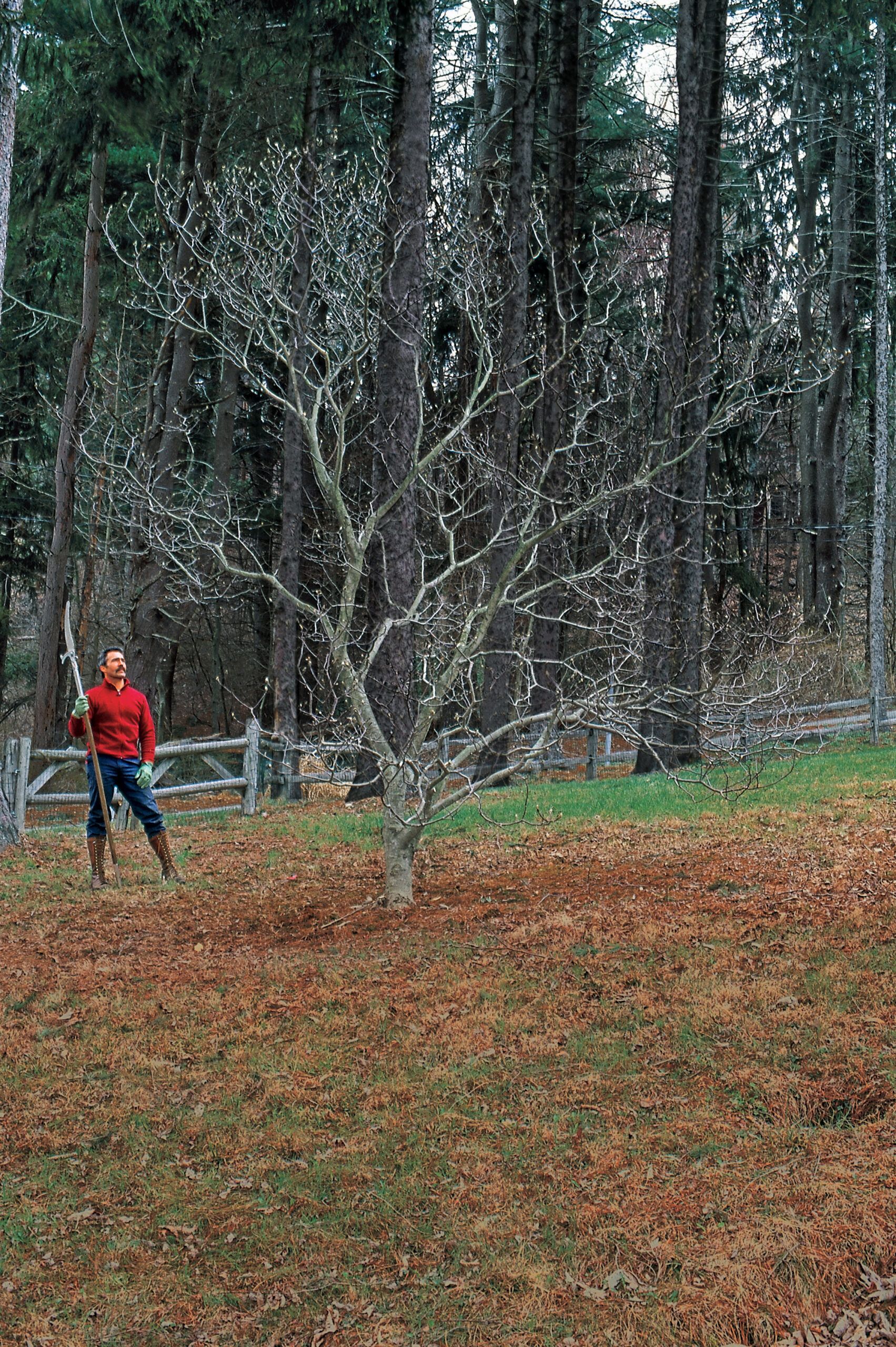Project details
Skill
Cost
Estimated Time
 Pole saw
Pole saw Bypass loppers
Bypass loppers Bypass pruning shears
Bypass pruning shears Pruning handsaw
Pruning handsaw
We all know proper pruning can enhance a tree’s health and beauty. But tangled branches that don’t look like the neat illustrations in books can be daunting. So where do you begin?
First, be sure it’s a job you can handle. A small ornamental tree 12 to 25 feet tall—such as a flowering cherry, magnolia, crab apple, or Japanese maple—is one you can tackle yourself. (Bigger trees that require chain-saw and ladder work are best left to a pro.) Then be sure you understand a few key principles.
“Pruning stimulates growth,” says Bill Pollock, co-owner of Arbor Services of Connecticut. “The goal is to encourage the tree to grow strong, healthy branches headed in the right direction.” So Pollack makes health-promoting cuts first, removing competing, misdirected, and weak branches. Then he prunes to enhance the tree’s natural form. “A magnolia has a graceful, open habit with main branches that grow up and out, and sweeping lower branches,” he says. “You want to remove branches that don’t look like a magnolia.” A common mistake is to “top and shape” by clipping the ends of branches. “Healthy shaping is done mostly from the inside,” he adds. The best time for the kind of remedial pruning an established, long-neglected tree (like the one in this story) needs is winter or early spring, when active growth has not yet begun. Bare branches allow you to stand back and really see what needs to be removed.
Shown: Arborist Bill Pollock stands back and takes a look at his work-in-progress from various angles, assessing the tree’s balance. “Don’t get carried away,” he advises overzealous pruners. “Remember, there’s always next year.”
Step 1
Plan the Biggest Cuts First
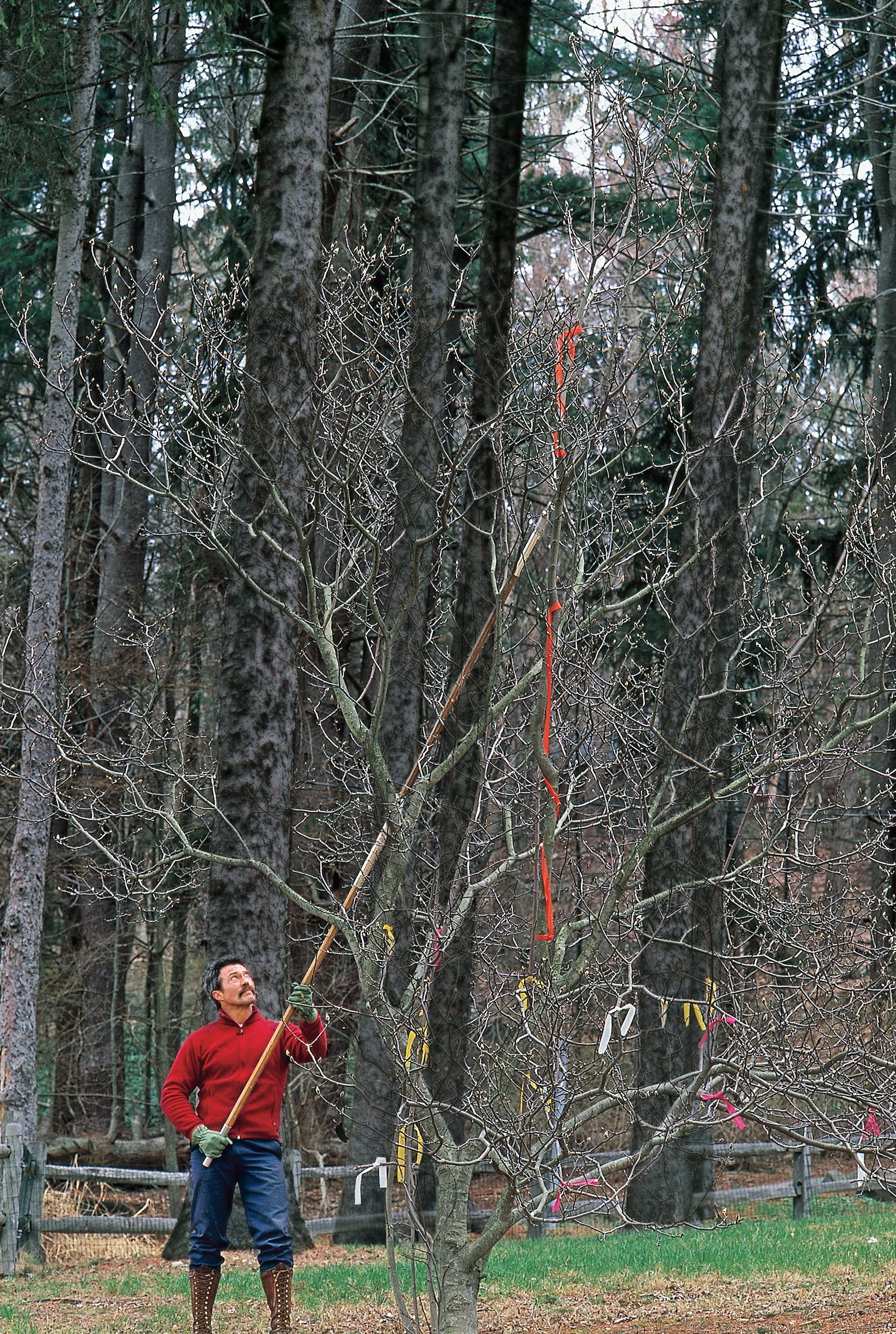
Here, Pollack has marked different problem branches with colored tape to illustrate his approach. Keep in mind that you should never remove more than one-third of the tree’s growth at a time. A vertical internal stem, with orange tape, competes with established leaders (the tree’s main stems) and sticks up too high. Pink tape marks rubbing branches that can injure protective bark. White tape indicates either damaged or broken branches, or dead ones, which are dark and shriveled. Yellow tape marks vertical shoots, called water sprouts, that crowd the tree’s interior. Pollack tackles the biggest cut, on the large stem, first. Using a pole saw and cutting in increments to prevent tearing, he prunes the stem back to a lateral branch to reduce its height and encourage additional branching.
Step 2
Saw Off Fat Branches in Three Cuts
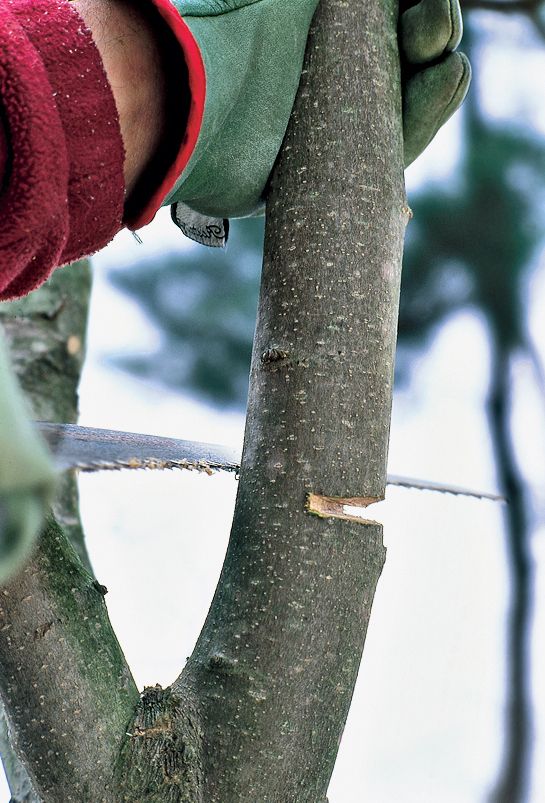
Use a three-part cut on big branches to prevent tearing. Any branch 3 inches or more in diameter requires a pruning saw and will fall under its own weight before the blade can get all the way through. This can tear good wood or bark and trap the saw if the branch is cut from below.
To prevent this, Pollack starts about 6 inches from where he wants his final cut to be, sawing partway through the branch or stem from the direction in which he wants it to fall: away from the trunk for a vertical, on the underside for a horizontal. Then he saws through from the other side, slightly above the first cut and sawing into it.
Step 3
Remove the Stub
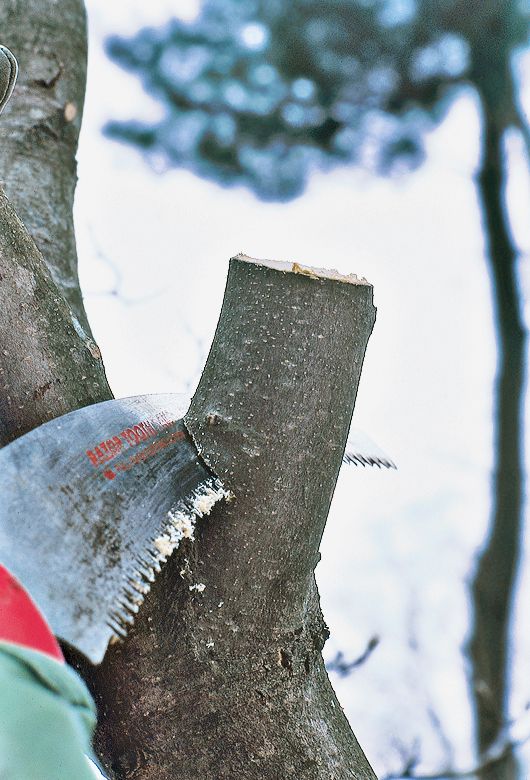
He cuts off the 6-inch stub at an angle (so that it will shed water) just above the branch collar.
Step 4
Leave the Tree to Heal Itself
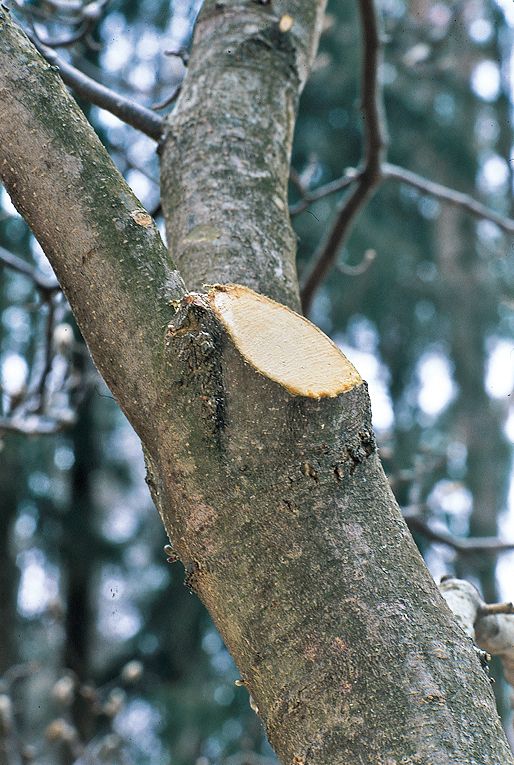
The branch collar will eventually grow over the clean wound.
Step 5
Remove Suckers at the Base
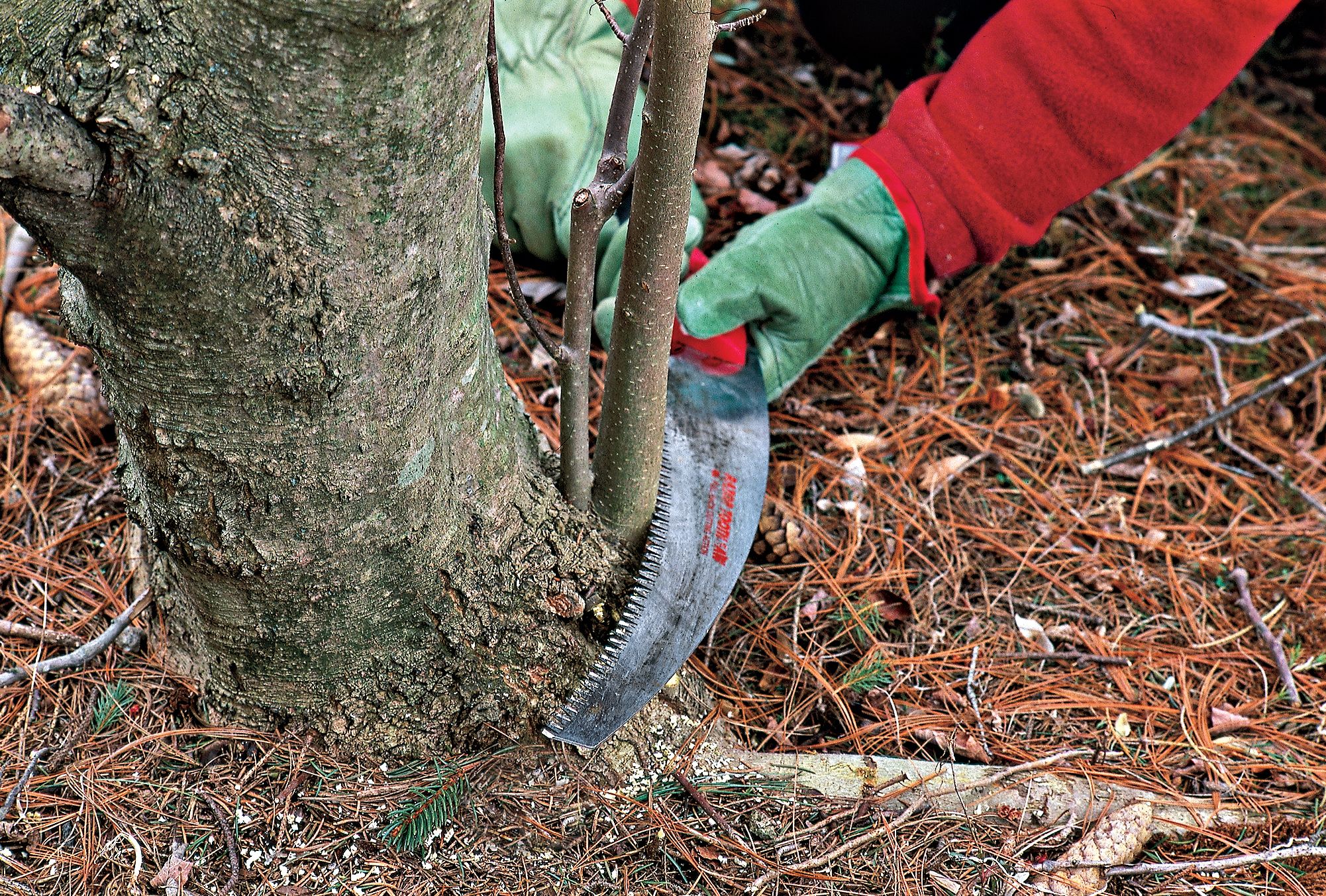
These vigorous offshoots of the trunk detract from the tree’s beauty and siphon energy from more attractive, productive parts that may yield flowers or fruit. Bypass hand pruners or loppers make quick work of thin suckers. Where they’re too crowded or large to clip, Pollack uses a pruning handsaw, taking care not to nick the bark on the trunk, which can open it to disease.
Step 6
Cut Close to the Branch Collar
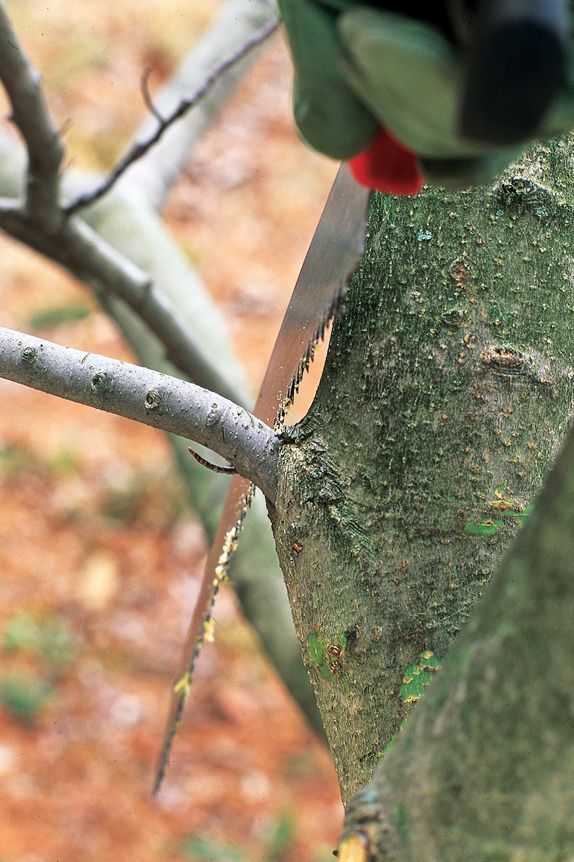
Pollack always positions his blade just outside the branch collar, a thickened area of wrinkled bark from which a branch emerges. Once a cut is made, hormones are released that cause the collar to grow over and seal the wound.
Step 7
Clip Water Sprouts
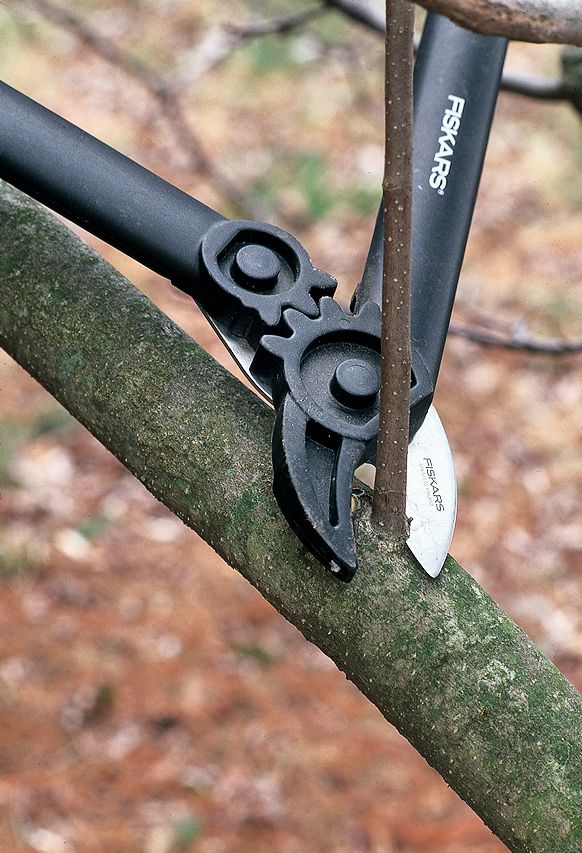
These vigorous shoots grow straight up and can crowd and shade a tree’s interior, so remove them while they’re small. Here, Pollack does the job with loppers that extend his reach when dealing with upper limbs.
Step 8
Remove Inward-Growing and Rubbing Branches
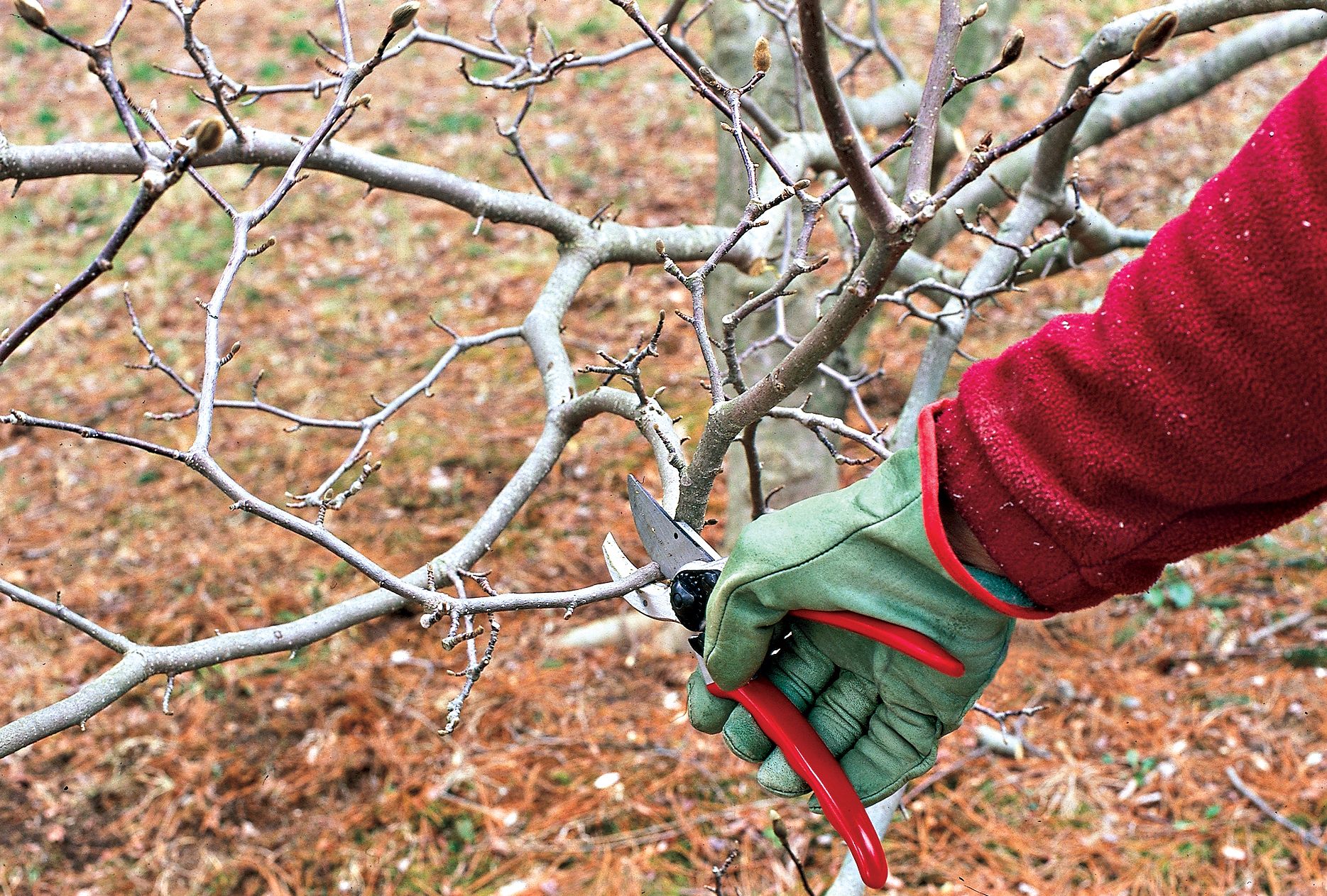
This curved branch took a wrong turn; in a few years, every branch it crossed would be wounded by rubbing. It’s also headed into the center of the tree, where it wouldn’t get enough light to produce good leaves or flowers.
Step 9
Enjoy the Spring Show

The pruned magnolia has fewer blooms the first year, but ultimately it will produce more. Its healthier, more open and balanced form also makes the tree less vulnerable to damage from heavy winds, ice, or snow.
